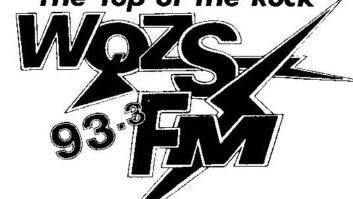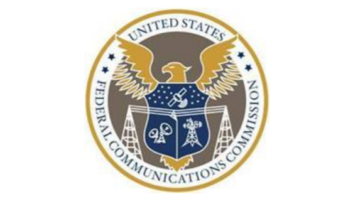Tom Ray addresses some common concerns about IBOC.
While the industry has been revving up for IBOC, there has not been much information available. This has led to misunderstandings, as in the March 10 letter “Slingin’ Hash” by Jim Jenkins.
As an early adopter of HD Radio at WOR(AM), I’d like to address four concerns brought up by Mr. Jenkins and others regarding IBOC.
Concern No. 1: IBOC will make all radios in the United States obsolete – There is no mandate to shut off the analog carriers, and your radio (AM or FM) will work just fine with IBOC. This isn’t HDTV, where analog carriers have a definitive cut-off date set by the FCC. I listened to WOR(AM), which transmits an IBOC signal, on the analog radio in my car for 14 months before I had an IBOC-capable radio to listen to. This analog radio was far from obsolete.
Radios eventually will become obsolete, when and if a mandate to turn off the analog modulation comes about. I do not, however, see this coming in the next 20 years.
Concern No. 2: The cost to small-town radio – Yes, there are costs involved to convert to IBOC. But again, there is no mandate or timetable to do so.
We’re constantly reading about loss of listenership. Much of this has to do with programming. But when your station’s listeners leave for a service such as XM or Sirius, then discover that you offer programming similar to what they like on satellite, frankly your 1955 vintage transmitter won’t be enough to woo them back.
Much as small-town television has had to respond to HDTV, small-town radio eventually will need to convert to IBOC. The time to start planning and budgeting is now – not when and if the FCC mandates digital service.
Concern No. 3: The listeners, particularly in poorer areas, won’t be buying the new radios for years – So we should stop progress for stations not in poor areas? How long did it take for FM and FM stereo to catch on? How long did it take for color television to catch on?
It is going to be the same for IBOC implementation. It will take a while to become mainstream. No one has said otherwise. If we don’t move forward, you may find that all stations will be in big trouble in 10-15 years, particularly those in poorer areas. They will be the first to struggle and go belly up.
Will IBOC be the savior of radio? No. But digital services are in demand by consumers, and consumers are smart. If we stick with the status quo “because we’re radio” or “because the listener won’t know any difference,” we’re all going to be out of business. Everything around us is changing technologically yet we are not. By refraining from changing to accommodate younger listeners who have grown up on Internet audio and MP3 players, even more nails are driven into the coffin of AM radio.
We can’t ignore this transition. Mr. Jenkins feels that we are mindlessly pushing a flawed technology, but show me a technology that is inherently perfect.
He states further that we are only going digital because it’s “different.” However, I have made countless recordings on linear DAT off my HD IBOC car radio, and play them to WOR staff members (not just engineers), clients and listeners on studio monitor speakers. I’ve given CDs to sales staff and neighbors, and asked them to hold sound tests in their cars and report back on what they find objectionable. Those who participated find it hard to believe these recordings were made off an AM radio (granted, HD-capable), and ask when it will be available on more stations. They also ask where they can get an HD Radio.
Concern No. 4: No one in the “trades” has addressed the frequency response curve and modulation limitation questions – I am a frequent contributor in this particular trade publication. Ready for these issues to be addressed?
There are no modulation limitations. WOR is still banging away at -97 percent, +122 percent with the IBOC carriers on, with aggressive processing – the same as we were pre-IBOC. This was our specification to Ibiquity when WOR became a test station in 2002.
We do not lose analog loudness when the IBOC carriers come on at sunrise, and we do not gain analog loudness when the IBOC carriers go off at sunset. We are still louder and prouder than our immediate competition, and make no apologies for that. IBOC did not hurt WOR’s analog modulation, as we have checked with oscilloscopes and spectrum analyzers.
We did, however, discover a few radios where WOR’s analog audio appears to reduce slightly when the AGC circuit senses the additional power in the sidebands with the IBOC carriers on. Frankly, I see this as a design flaw with the radio. Should we abandon IBOC because there are a few radios in the market with an inherently flawed design?
WOR has worked closely with Ibiquity’s engineers to make sure that the IBOC portion of the signal is the best it can be, and the analog portion is not impacted. Ibiquity listened to us and corrected issues with analog positive peak capabilities and its audio filter.
This resulted in the “WOR Patch,” a service pack that has been incorporated into the final version of the software. We would not let the analog suffer, and Ibiquity came through. There is no impact on analog performance, and the new HDC codec has solved the artifact issues.
Regarding the frequency response curve, what needs to be addressed? On the analog carrier, you are limited to 5 kHz. The majority of AM radios I have encountered generally do not reproduce anything above 3-4 kHz. The stock radio that was in my Ford Explorer reproduced 6 kHz, but only when I was sitting in front of the transmitter building. Extending your analog frequency response beyond 5 kHz will severely degrade your digital coverage area and digital performance. If the greater portion of AM radios cannot “hear” anything above 4 kHz, what is the issue?
There are two general operating modes for hybrid AM IBOC. The normal mode, which limits the analog frequency response to 5 kHz, enables the HD Radio to constantly look at the sidebands and decide from which one to decode the data, upper or lower.
The second mode of IBOC operation allows for an analog bandwidth of 8 kHz. In this mode, however, the radio must decode both sidebands at all times to recover the data and generate HD audio. Obviously, if there is a problem with one of the sidebands, the radio cannot reproduce an HD signal. This will reduce your HD coverage, and the recovered data will not be as robust.
The choice of operation is up to the individual station, but if the majority of radios do not reproduce analog audio above about 4 kHz, what is the point of limiting your HD coverage?
Adjacent-channel and sideband issues
Yes, there may be some issues due to the IBOC sidebands. Once again, no one has ever said otherwise. Consider that the IBOC system is designed to fit under the NRSC mask, as mandated by the FCC. Energy that fits under the mask is completely permissible under FCC regulations, regardless of what anyone wishes to read into this rule.
I refer readers to the FCC regulations, Part 73.37, to get the definition of the coverage area for a particular class of AM station. Contrary to what some believe, there are coverage definitions in the FCC rules for AM stations. There may be some background hiss heard out, around and beyond the 0.5mV/M contour of a station that has an IBOC neighbor. In listening tests, this was deemed more acceptable than the “Donald Duck Talk” from present adjacent sideband splatter.
And let’s face it. Because of the electrically noisy environments we live in, if you can even hear an AM station out to the 0.5 mV/M contour, you’re a lucky dog. If you can’t hear the station reliably in these areas anyway, there should be no reason to prevent implementation of IBOC.
If you think your typical listeners are listening to your station when the signal degrades to noise out to and beyond the 0.5 mV/M contour, perhaps you should survey the average American’s radio listening habits.
My son knows what AM radio is, yet he and his friends refuse to listen to it. This has nothing to do with programming – they simply do not care for its sound. Additionally, I have observed neighbors punching the button at the first sign of noise on an AM or an FM station. They don’t like it, won’t put up with it and won’t listen to a station regardless of the programming, once the signal gets noisy.
Regarding the cascading of algorithms, yes, with IBOC, we’re all going to have to be more careful regarding data reduction use. At WOR, we record the Bill O’Reilly program for later playback, and do so in a worst-case scenario where the audio is put through numerous coding changes. Listening in the car, you don’t hear any “swimming” or raunchy data cascade effects. The average listener won’t notice.
However, if you put the air product up against a studio recording of the O’Reilly program, you will definitely hear the result of the algorithm cascading. We did a test with Westwood One, recording identical segments at every point in the path where the audio coding would change, from studio to on-air at WOR. It’s amazing to hear the changes along each leg of the path.
The overall result, however, is that the average listener will not notice – unless they are audiophiles or know what the studio product sounds like. Don’t forget that audio memory is extremely short. If you don’t know what you are listening for, chances are you won’t hear it, unless the result of the cascading is so raunchy that you can’t help but notice.
Pre-emptive rebuttal
Before I am once again accused (and it was here in letters to Radio World) of being anti-small market radio and anti-AM in general, consider this: Buckley Broadcasting is one of the true small operators left in the United States.
WOR is an anomaly in our company, as most of our stations are smaller stations in much smaller markets. We don’t have the deep pockets of investors to pick, as do the Clear Channels and Infinitys of the world. When we make a technology decision, it is something the company must believe in – and it is my job to bring the pros and cons of any new technology facing the company to the president.
We are in the process of finding out what it will cost to outfit our 19 radio stations for IBOC operation. In looking toward the future of radio, we believe IBOC to be a useful tool.
I grew up on AM radio, but I am a realist. If we continue on the same path, we will all be in trouble.
IBOC isn’t the three-headed monster it’s been portrayed to be. It’s time for a change in our industry. Education about IBOC is the key to understanding and using this new technology to our greatest advantage. Remaining the same while the world marches past us will place terrestrial AM and FM broadcasting among the dinosaurs, rendering us irrelevant.












